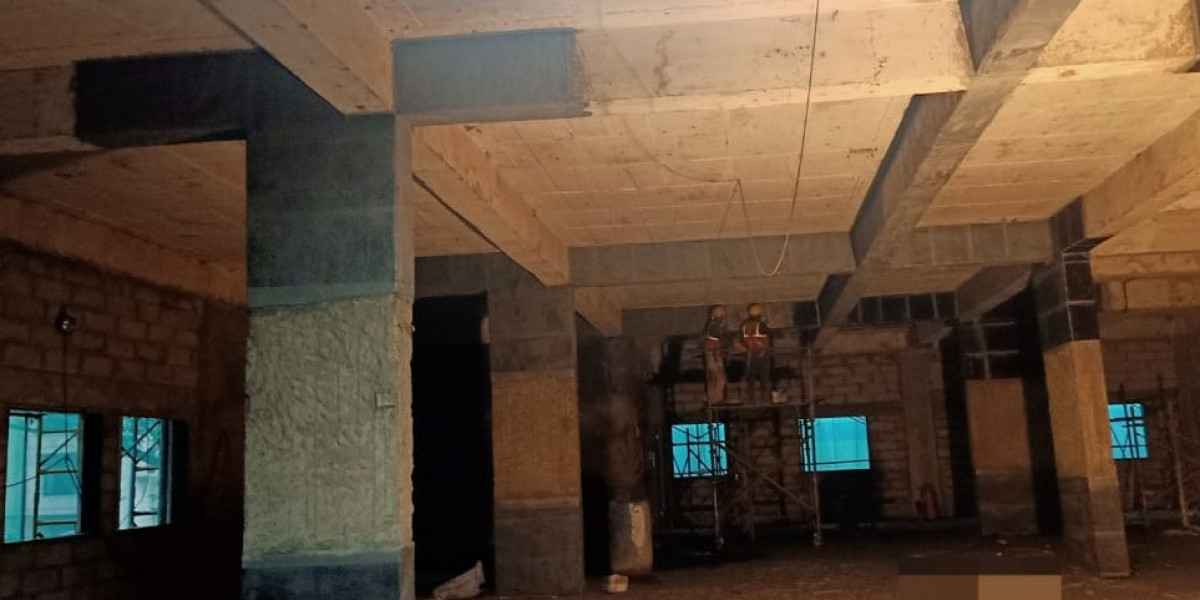Every structure faces the test of time, load, and environmental impact. Be it residential, commercial, or industrial construction, the structural components, especially beams and slabs, undergo stress that can weaken them over years. Flexural Strengthening Services are essential solutions designed to enhance the bending capacity and performance of such elements. This method helps extend the life and safety of concrete structures without complete replacement.
Why Flexural Strengthening Is Important
Modern infrastructure demands safety and longevity. When structural members such as beams, girders, or slabs experience cracks or deformation, their flexural strength reduces significantly. In such cases, flexural strengthening becomes vital to restore their load-bearing capacity. It prevents structural failure, minimizes repair costs, and ensures compliance with safety standards, especially in aging buildings, bridges, and parking structures.
Understanding the Concept of Flexural Strengthening
Flexural Strengthening refers to techniques that improve the bending resistance of structural components subjected to flexural loads. Engineers commonly use materials like carbon fiber reinforced polymer (CFRP), steel plates, or fiber wraps to reinforce the tension zones of beams or slabs. This method enhances the structure’s overall stiffness and helps it withstand increased service loads efficiently, making it a reliable option for retrofitting projects.
Common Causes of Flexural Weakness in Structures
Before applying flexural strengthening methods, it’s essential to understand why a structure weakens. Common causes include design errors, excessive loading, material degradation, corrosion of reinforcement, and natural aging. Environmental factors such as moisture penetration and temperature variation also accelerate deterioration. Addressing these underlying issues ensures that the strengthening process delivers long-lasting results.
Techniques Used in Flexural Strengthening
Different techniques are used depending on the structure’s condition and purpose. The most widely adopted method is carbon fiber wrapping, which uses lightweight, high-strength fiber sheets bonded to the surface using epoxy resin. Other techniques include steel plate bonding, near-surface mounted reinforcement (NSMR), and external post-tensioning. Among these, CFRP wrapping has gained immense popularity due to its ease of installation, minimal downtime, and superior performance.
Carbon Fiber Wrapping: A Modern Solution
Carbon fiber wrapping has revolutionized the field of flexural strengthening services. It involves applying carbon fiber sheets to the tension side of beams or slabs, creating a high-strength composite layer. This not only improves load-carrying capacity but also resists corrosion and fatigue. The lightweight nature of carbon fiber makes it ideal for retrofitting old structures without adding significant dead load. Its durability and efficiency make it a preferred choice in modern civil engineering.
Applications of Flexural Strengthening in Construction
The scope of flexural strengthening services extends across multiple sectors. They are commonly used in residential buildings, commercial complexes, bridges, parking structures, and industrial plants. Strengthening is also required in heritage restoration projects, where demolishing or reconstructing old structures is not feasible. The versatility of this technique allows engineers to enhance safety and stability while maintaining the architectural integrity of the original design.
Flexural Strengthening in RCC Beams and Slabs
In reinforced concrete (RCC) structures, beams and slabs bear most of the flexural loads. Over time, cracks appear, reducing their strength and performance. Flexural strengthening for RCC beams involves applying external reinforcement, such as CFRP or steel plates, to restore the original strength. For slabs, strengthening ensures they can carry modern load requirements, especially when converting old buildings for new uses or adding floors above existing structures.
Steps Involved in Flexural Strengthening Work
The process of flexural strengthening follows a structured approach to ensure safety and efficiency. It begins with structural assessment, followed by surface preparation and material selection. Engineers then apply the chosen strengthening technique usually carbon fiber wrapping or steel bonding and conduct quality testing after completion. This systematic process ensures the repair not only enhances strength but also improves the structure’s durability and resistance to future stress.
Flexural Strengthening vs. Shear Strengthening
While flexural strengthening focuses on improving the bending capacity, shear strengthening enhances resistance against diagonal cracking caused by shear forces. Both methods are complementary and often used together in structural rehabilitation. For example, in heavily loaded beams, engineers may apply CFRP laminates for flexural strengthening and additional wraps on the sides for shear reinforcement. This combined approach ensures comprehensive structural stability.
Benefits of Flexural Strengthening Services
The advantages of flexural strengthening services go beyond just repairing cracks. It improves the load-carrying capacity, extends the lifespan of structures, and reduces maintenance costs. Since methods like CFRP wrapping require no heavy machinery or major demolition, they are fast and non-disruptive. Moreover, these techniques enhance seismic performance, making structures safer in earthquake-prone regions. Overall, they offer a cost-effective solution for strengthening existing infrastructures.
When to Consider Flexural Strengthening
Property owners, facility managers, or engineers should consider flexural strengthening when visible cracks appear on beams or slabs, or when structural deflection increases. It’s also recommended during building renovations, load changes, or code upgrades. Regular inspection helps identify early signs of distress, ensuring that strengthening measures are implemented before major damage occurs. Preventive strengthening can save time, cost, and potential safety hazards.
High-Performance Materials for Flexural Strengthening
Modern flexural strengthening techniques rely heavily on advanced composite materials. Among them, CFRP (Carbon Fiber Reinforced Polymer) stands out for its high tensile strength, corrosion resistance, and lightweight properties. Glass fiber reinforced polymer (GFRP) and basalt fiber wraps are also used in specific applications. The choice of material depends on the structure’s design, load requirements, and environmental exposure conditions.
Sustainability in Flexural Strengthening
Sustainability plays an important role in modern construction. Instead of demolishing and rebuilding, flexural strengthening services promote a sustainable approach by upgrading existing structures. It significantly reduces construction waste, carbon emissions, and material consumption. The use of composite materials like CFRP further supports environmental responsibility, making this method a smart choice for both safety and sustainability goals.
Cost Considerations and Efficiency
Compared to traditional repair methods, flexural strengthening offers significant cost benefits. It eliminates the need for large-scale demolition and reconstruction, reducing project downtime. Although materials like carbon fiber may seem expensive initially, their long lifespan and minimal maintenance requirements make them cost-effective in the long run. This balance between cost and performance has made strengthening services increasingly popular in infrastructure management.
Future of Flexural Strengthening in India
With rapid urbanization and aging infrastructure, flexural strengthening services in India are gaining momentum. Engineers are adopting innovative technologies to restore bridges, buildings, and industrial structures safely. As the country emphasizes sustainability and safety, demand for professional strengthening and retrofitting services continues to rise. Advanced materials, digital monitoring tools, and improved engineering standards will shape the future of this growing sector.
In today’s rapidly evolving construction environment, flexural strengthening services play a crucial role in maintaining and enhancing the performance of concrete structures. As buildings, bridges, and industrial facilities age, structural components like beams and slabs often experience stress, cracks, or reduced load-bearing capacity. Flexural strengthening provides an effective solution to restore and improve these elements, ensuring they can safely handle modern load requirements. Techniques such as carbon fiber wrapping, steel plate bonding, and other reinforcement methods not only strengthen the structure but also prolong its lifespan, reduce maintenance costs, and prevent potential failures. Beyond structural benefits, these services promote sustainability by avoiding demolition and minimizing material waste. From residential and commercial buildings to aging infrastructure like bridges and parking structures, flexural strengthening offers a cost-effective, modern, and reliable method to enhance safety, durability, and overall structural integrity, making it an essential component of contemporary civil engineering practices.














